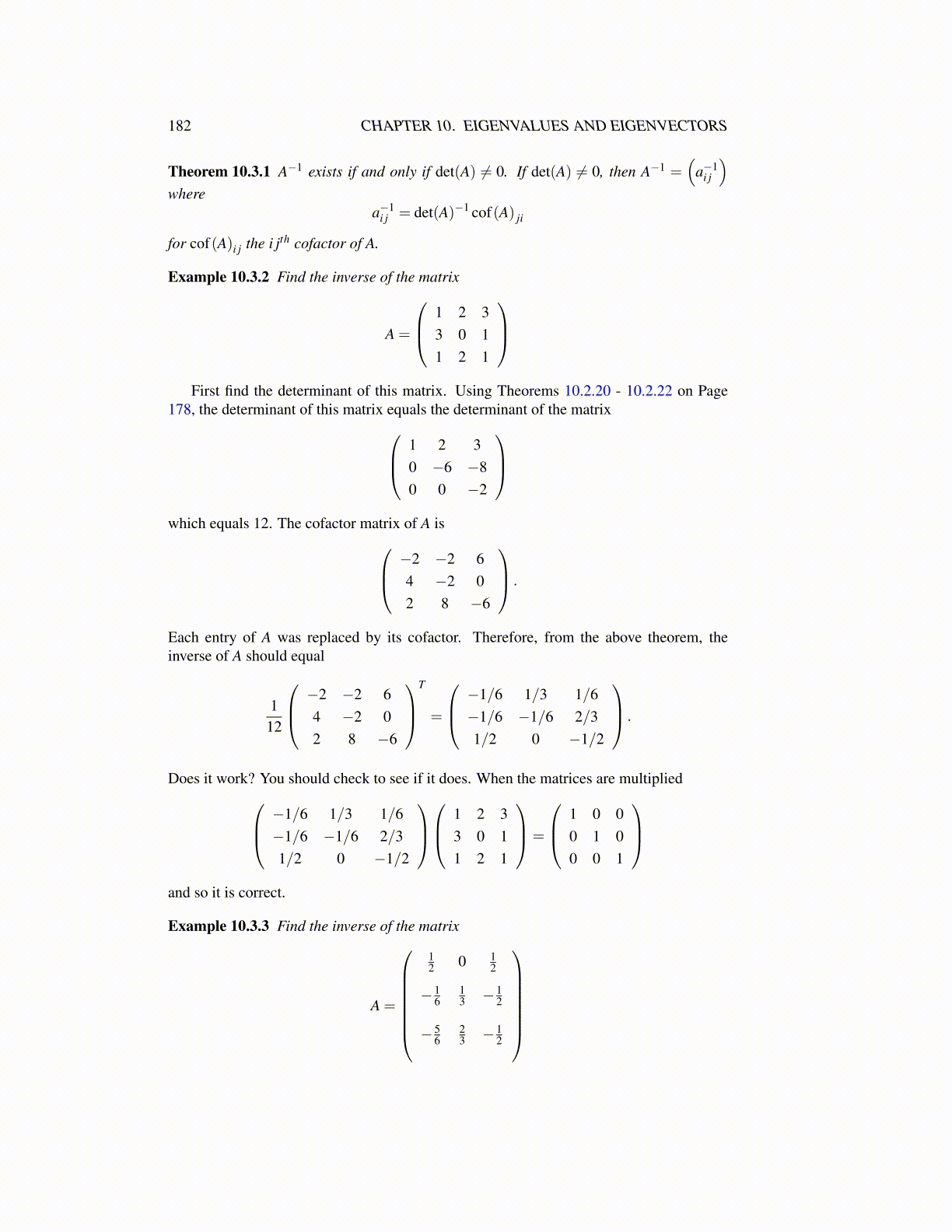
182 CHAPTER 10. EIGENVALUES AND EIGENVECTORS
Theorem 10.3.1 A−1 exists if and only if det(A) ̸= 0. If det(A) ̸= 0, then A−1 =(
a−1i j
)where
a−1i j = det(A)−1 cof(A) ji
for cof(A)i j the i jth cofactor of A.
Example 10.3.2 Find the inverse of the matrix
A =
1 2 33 0 11 2 1
First find the determinant of this matrix. Using Theorems 10.2.20 - 10.2.22 on Page
178, the determinant of this matrix equals the determinant of the matrix 1 2 30 −6 −80 0 −2
which equals 12. The cofactor matrix of A is −2 −2 6
4 −2 02 8 −6
.
Each entry of A was replaced by its cofactor. Therefore, from the above theorem, theinverse of A should equal
112
−2 −2 64 −2 02 8 −6
T
=
−1/6 1/3 1/6−1/6 −1/6 2/31/2 0 −1/2
.
Does it work? You should check to see if it does. When the matrices are multiplied −1/6 1/3 1/6−1/6 −1/6 2/31/2 0 −1/2
1 2 3
3 0 11 2 1
=
1 0 00 1 00 0 1
and so it is correct.
Example 10.3.3 Find the inverse of the matrix
A =
12 0 1
2
− 16
13 − 1
2
− 56
23 − 1
2